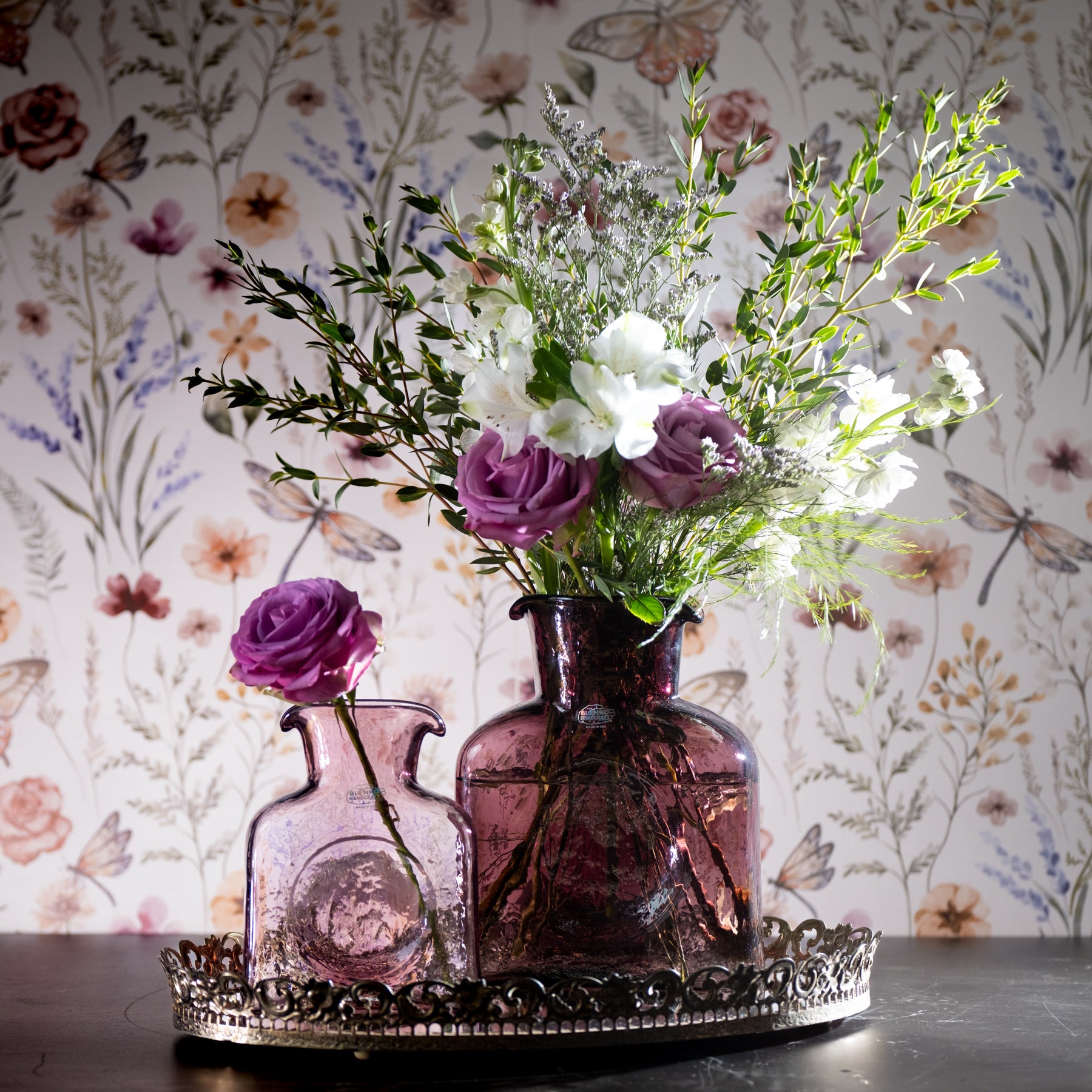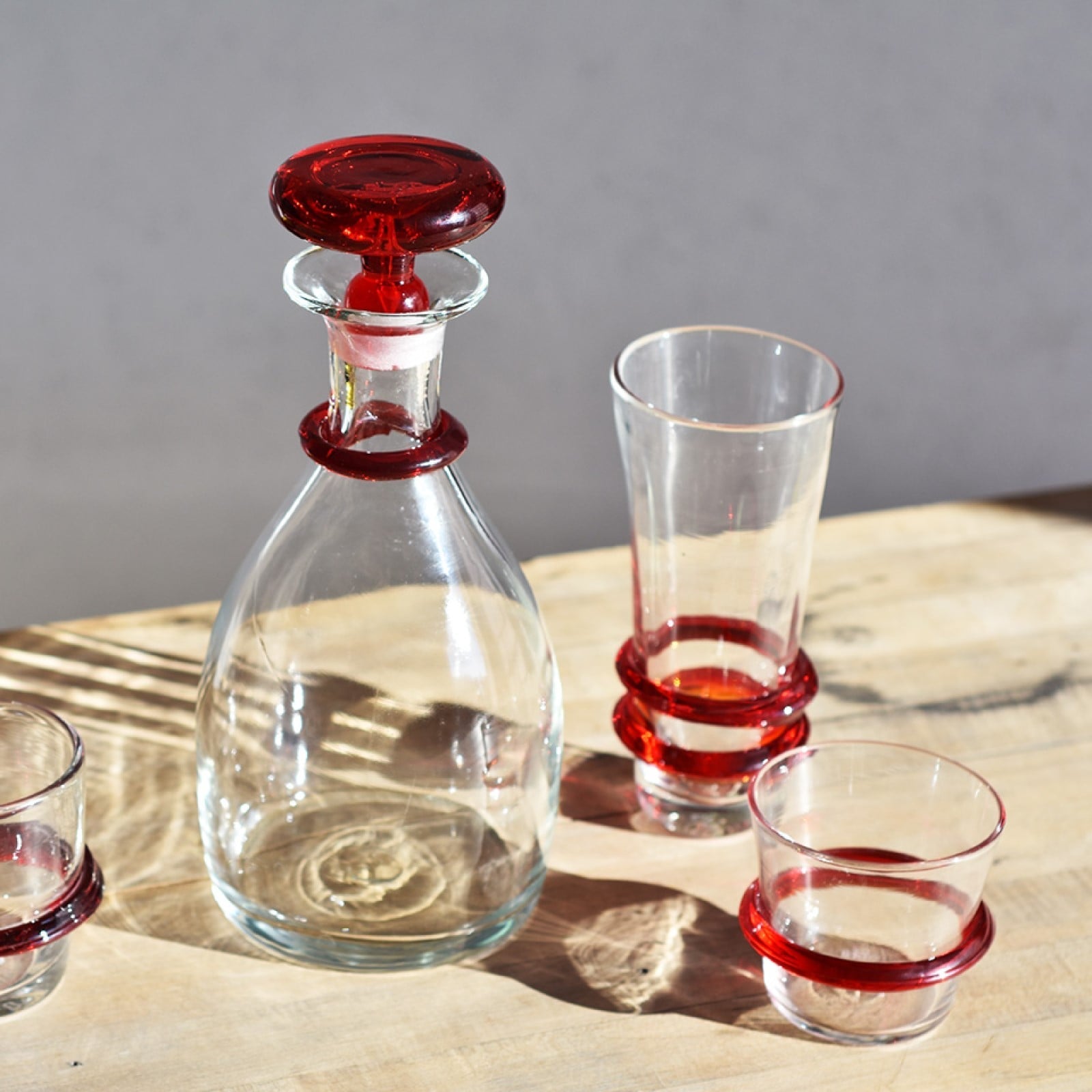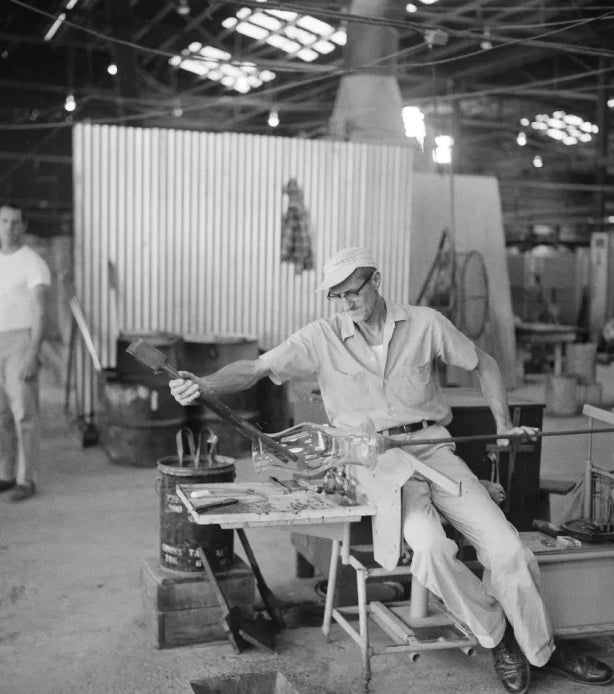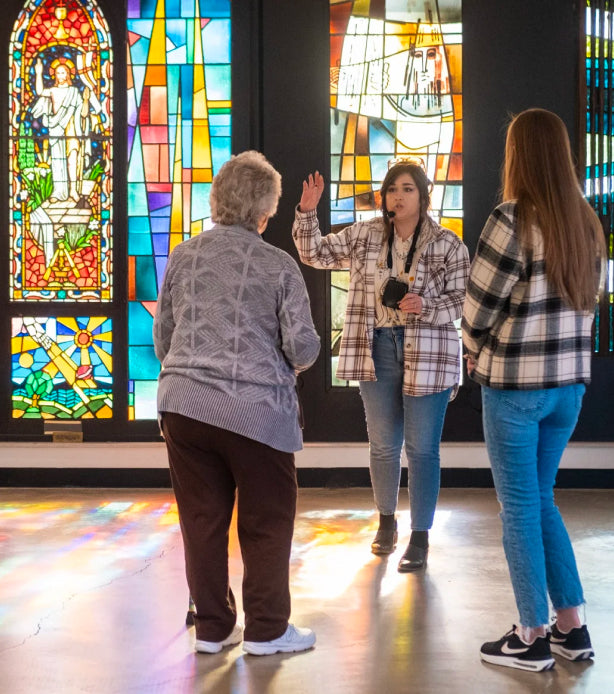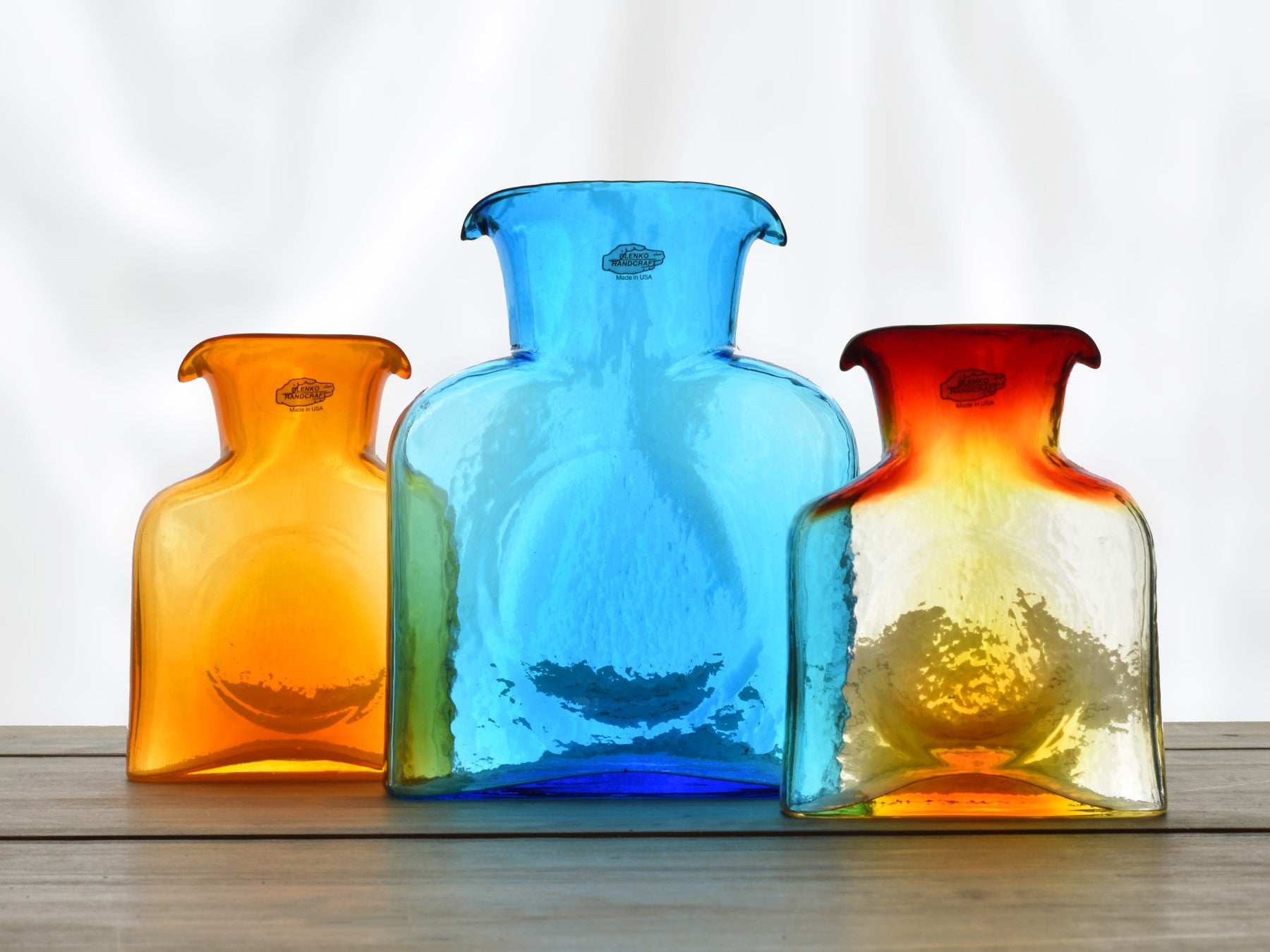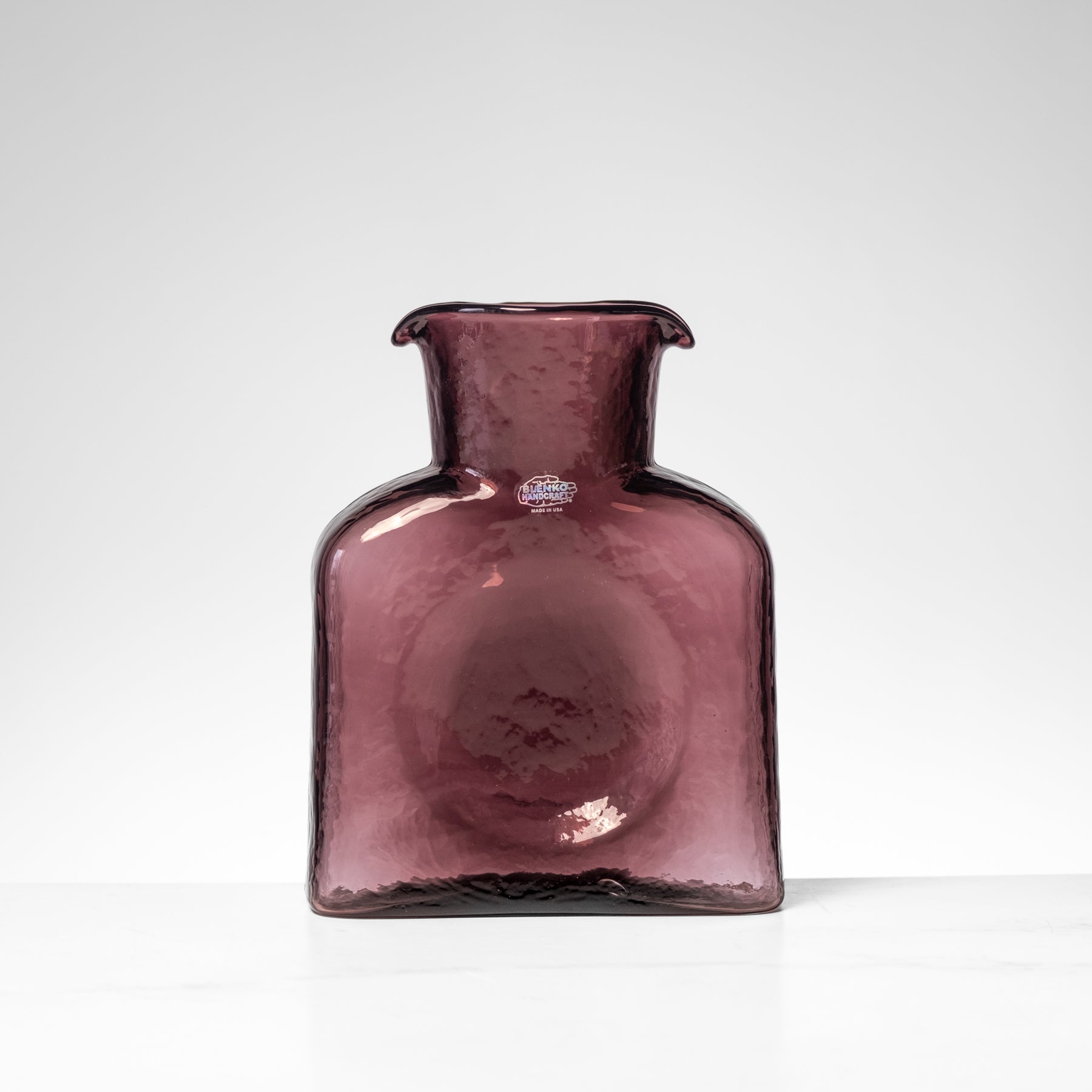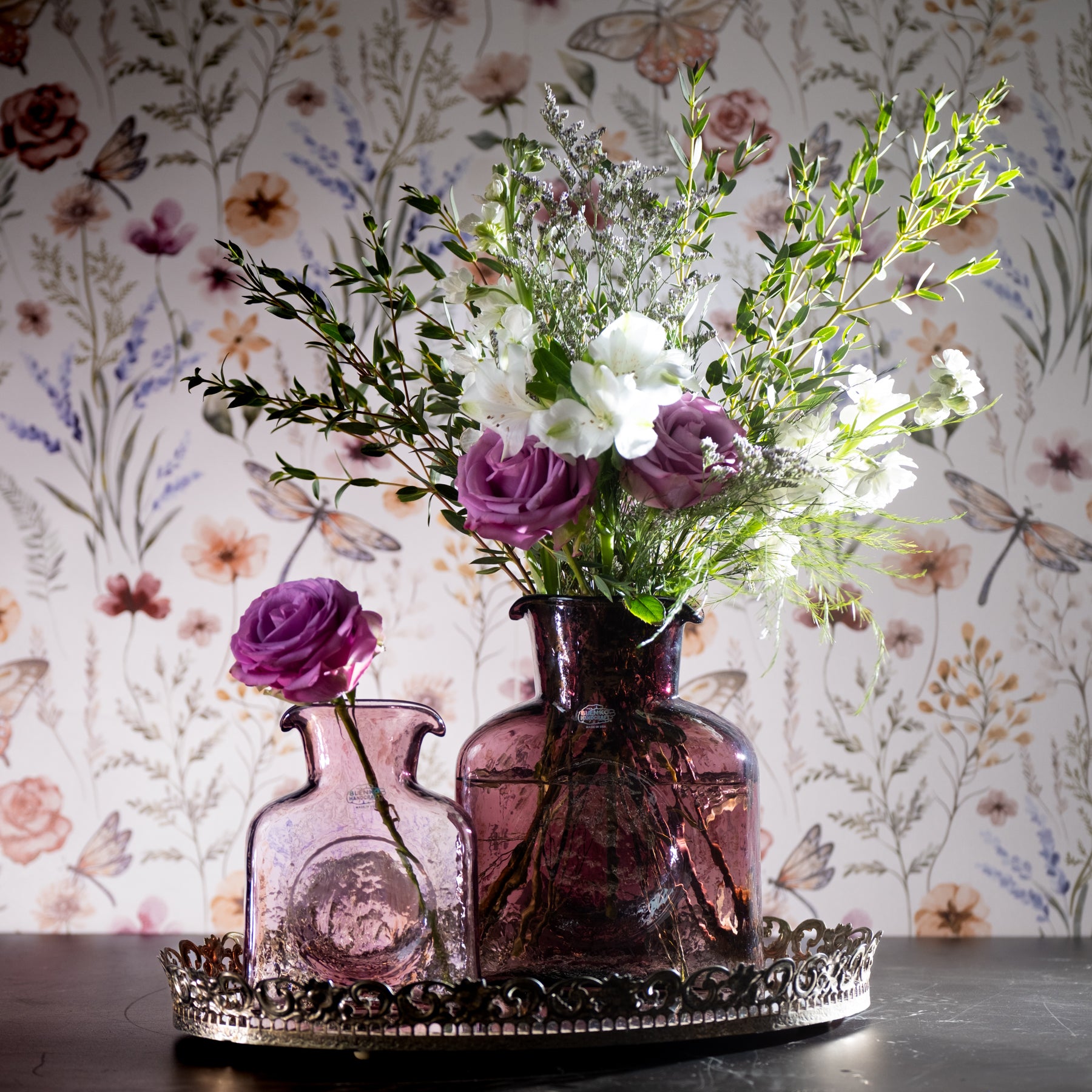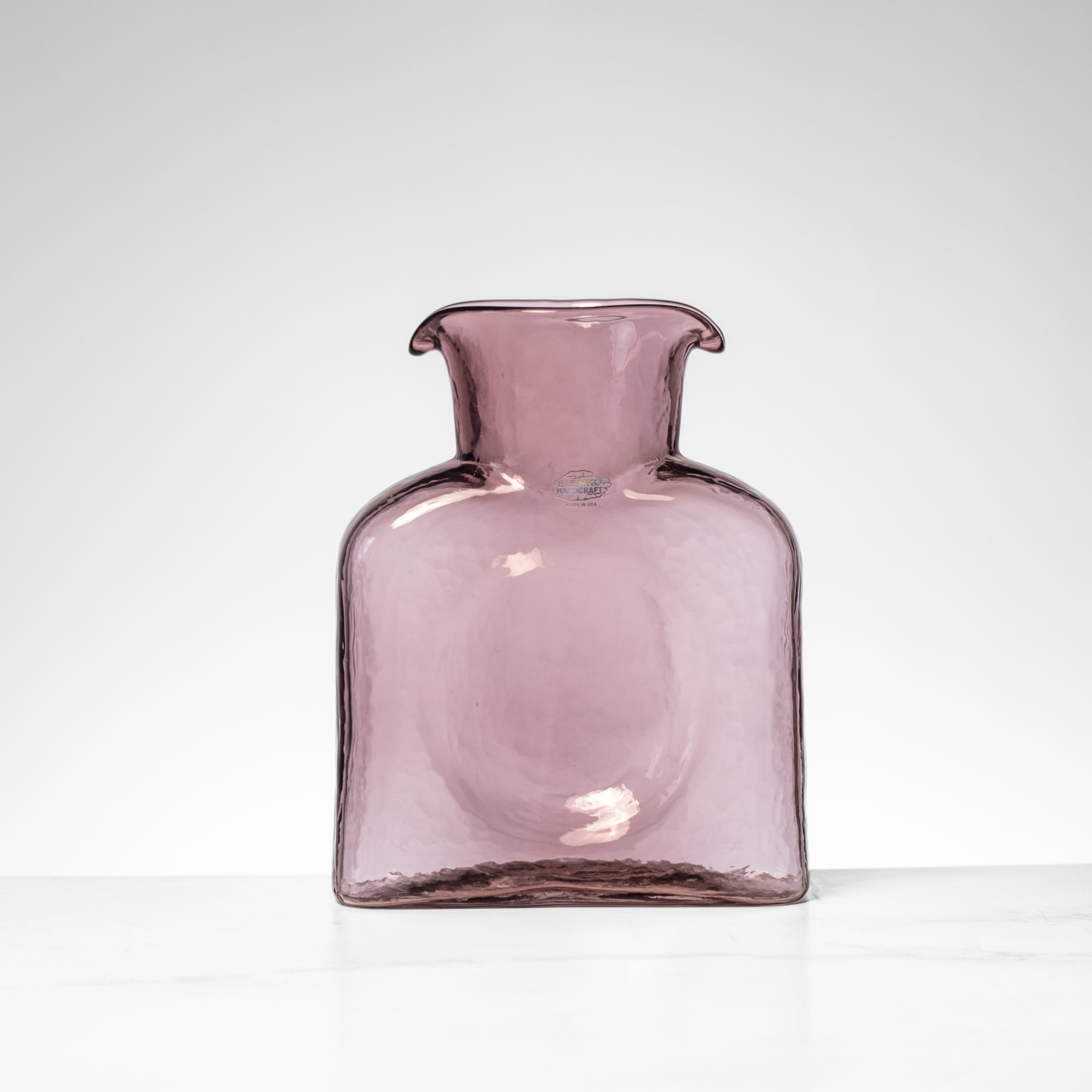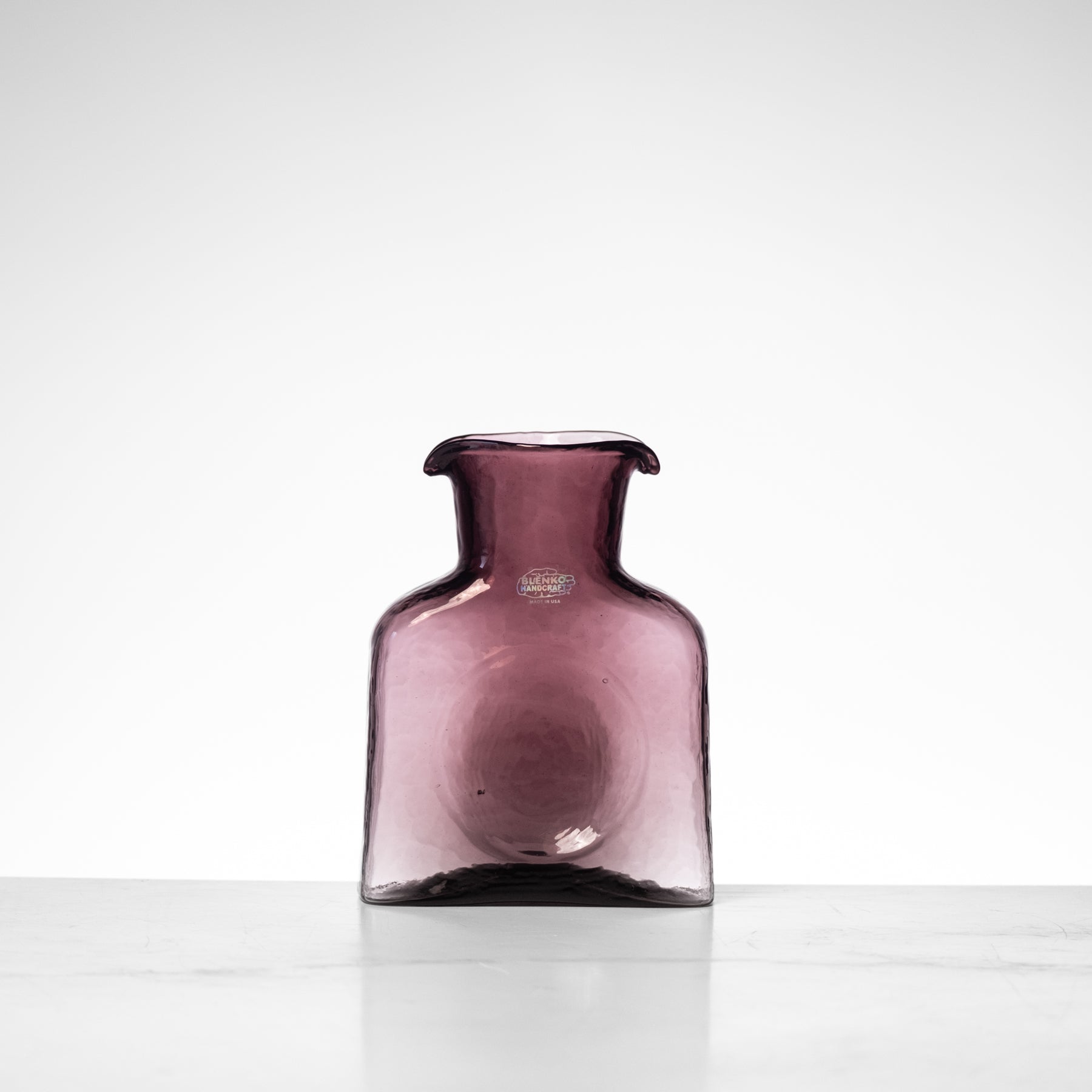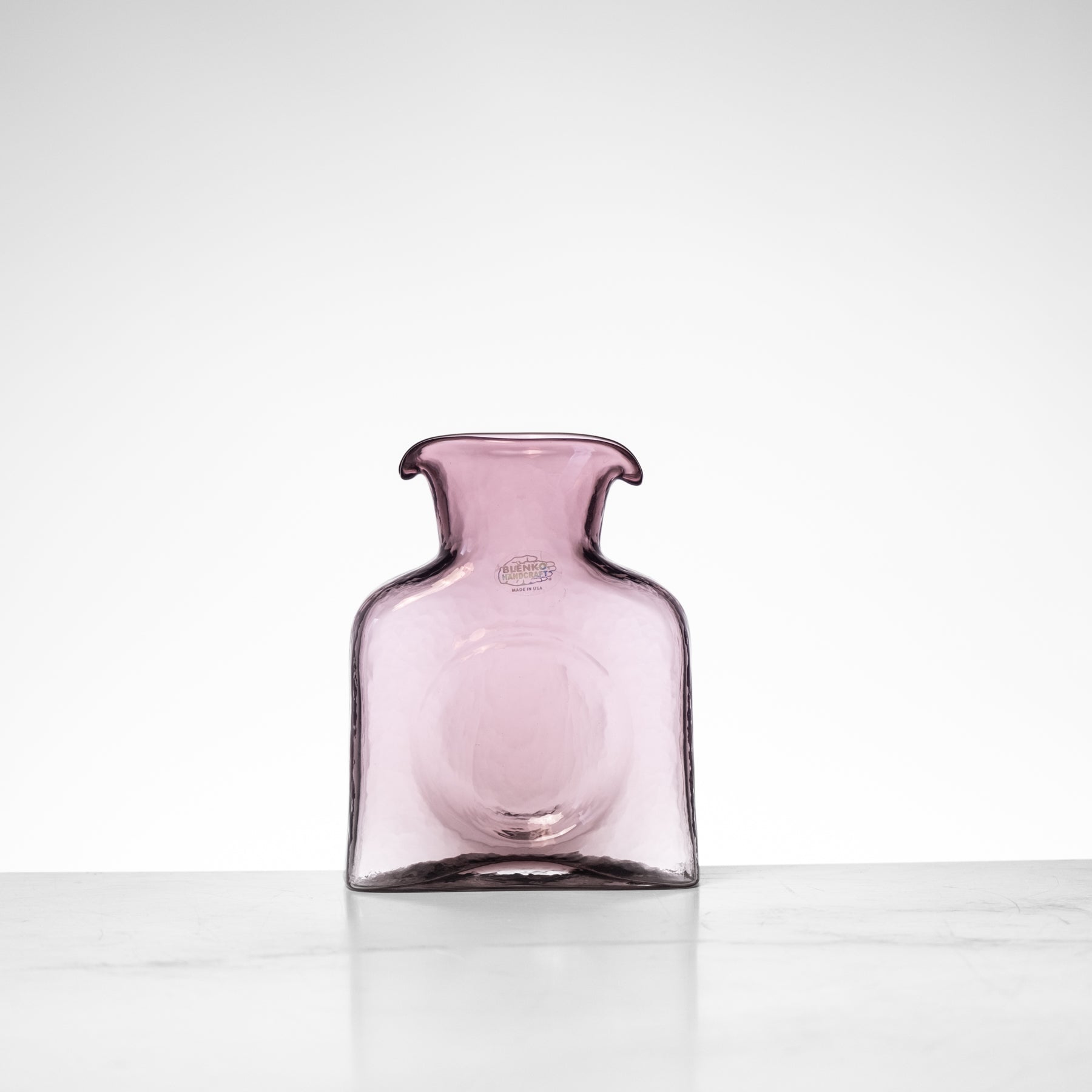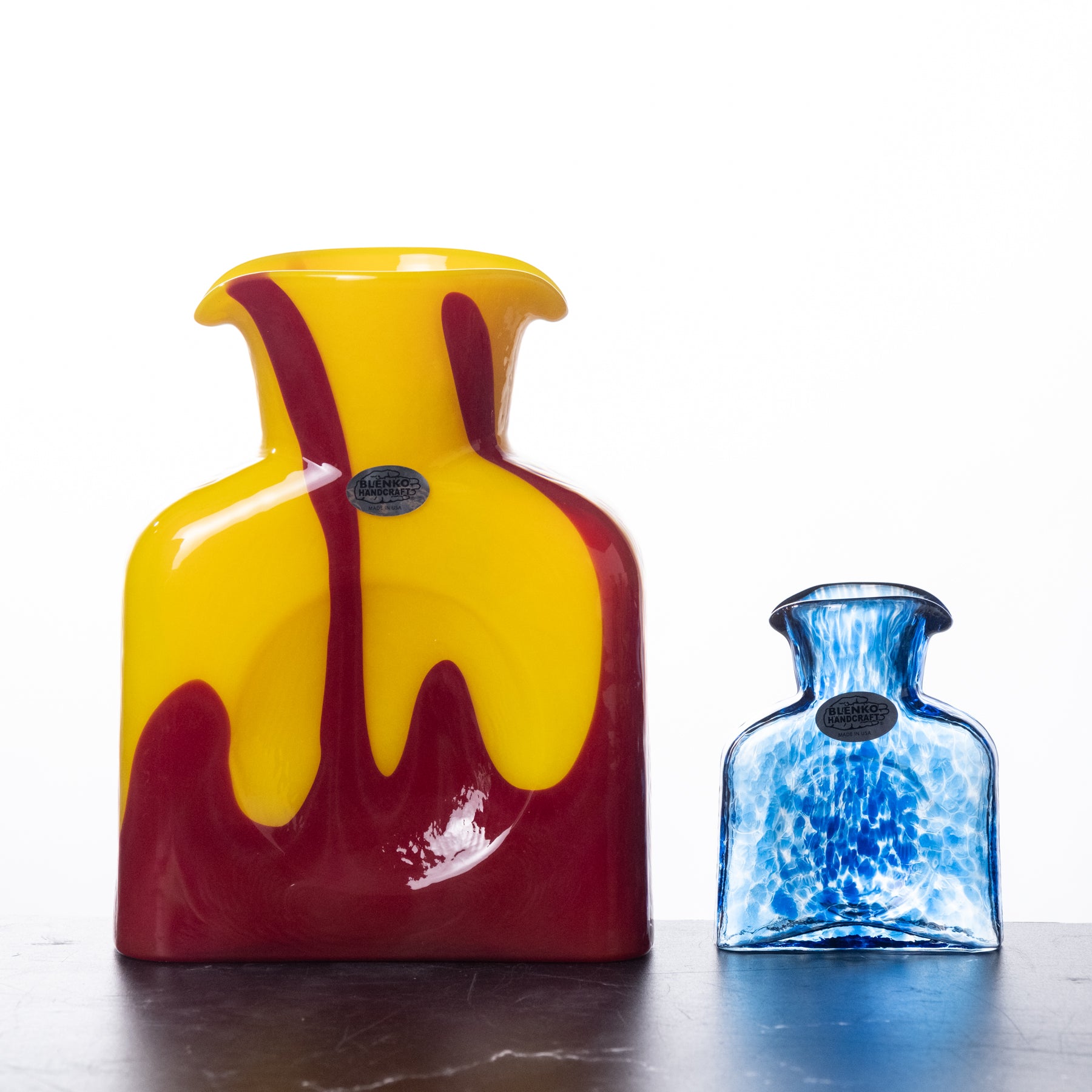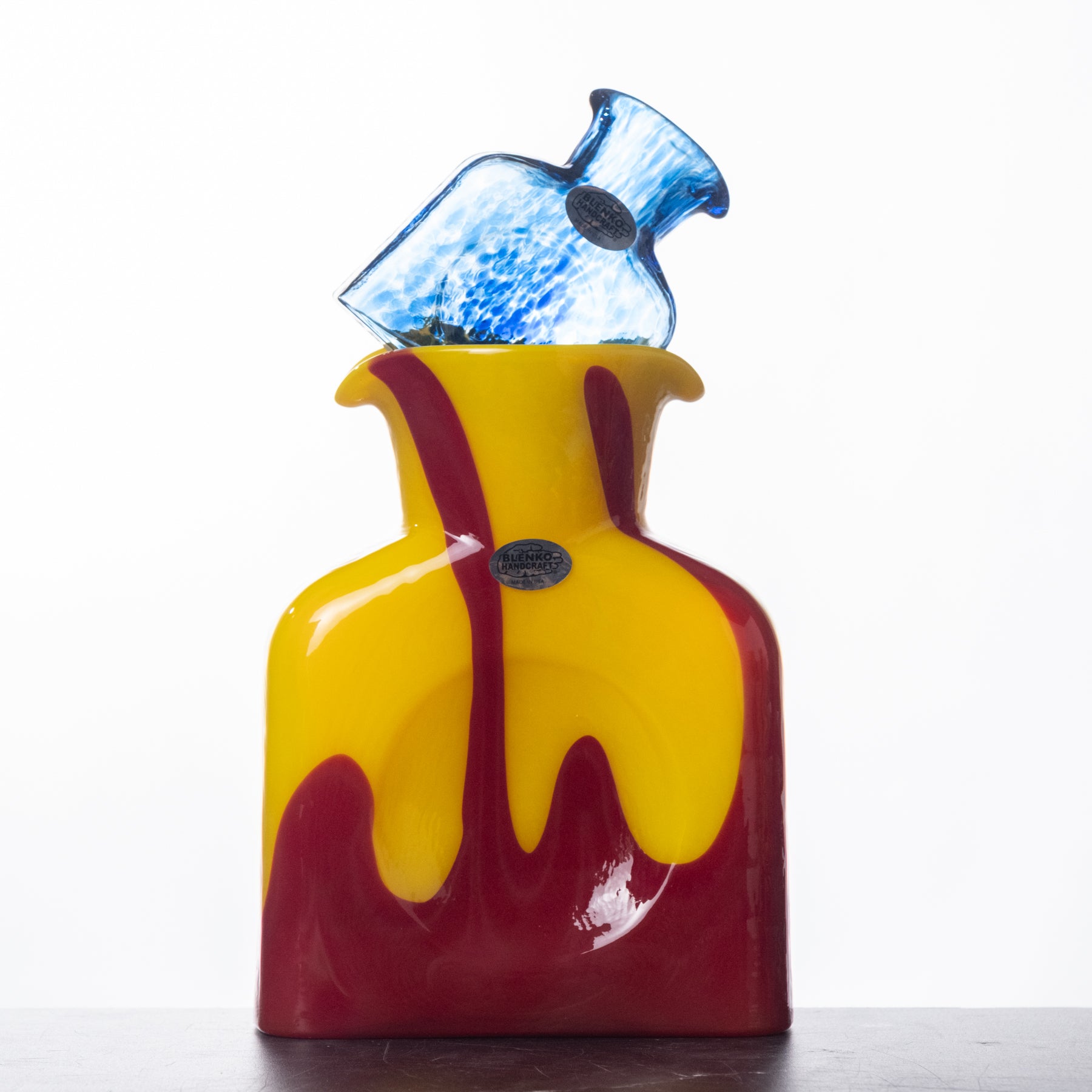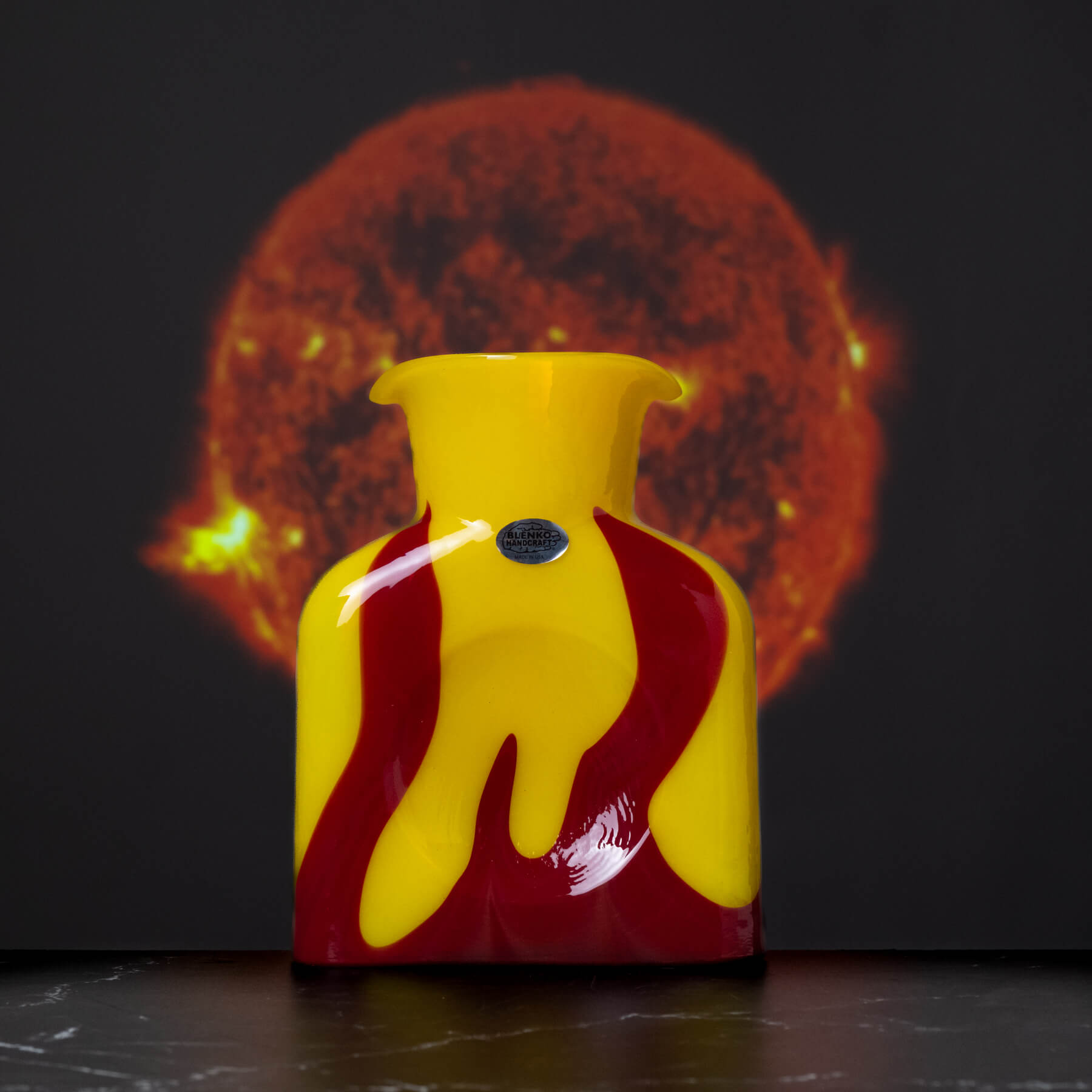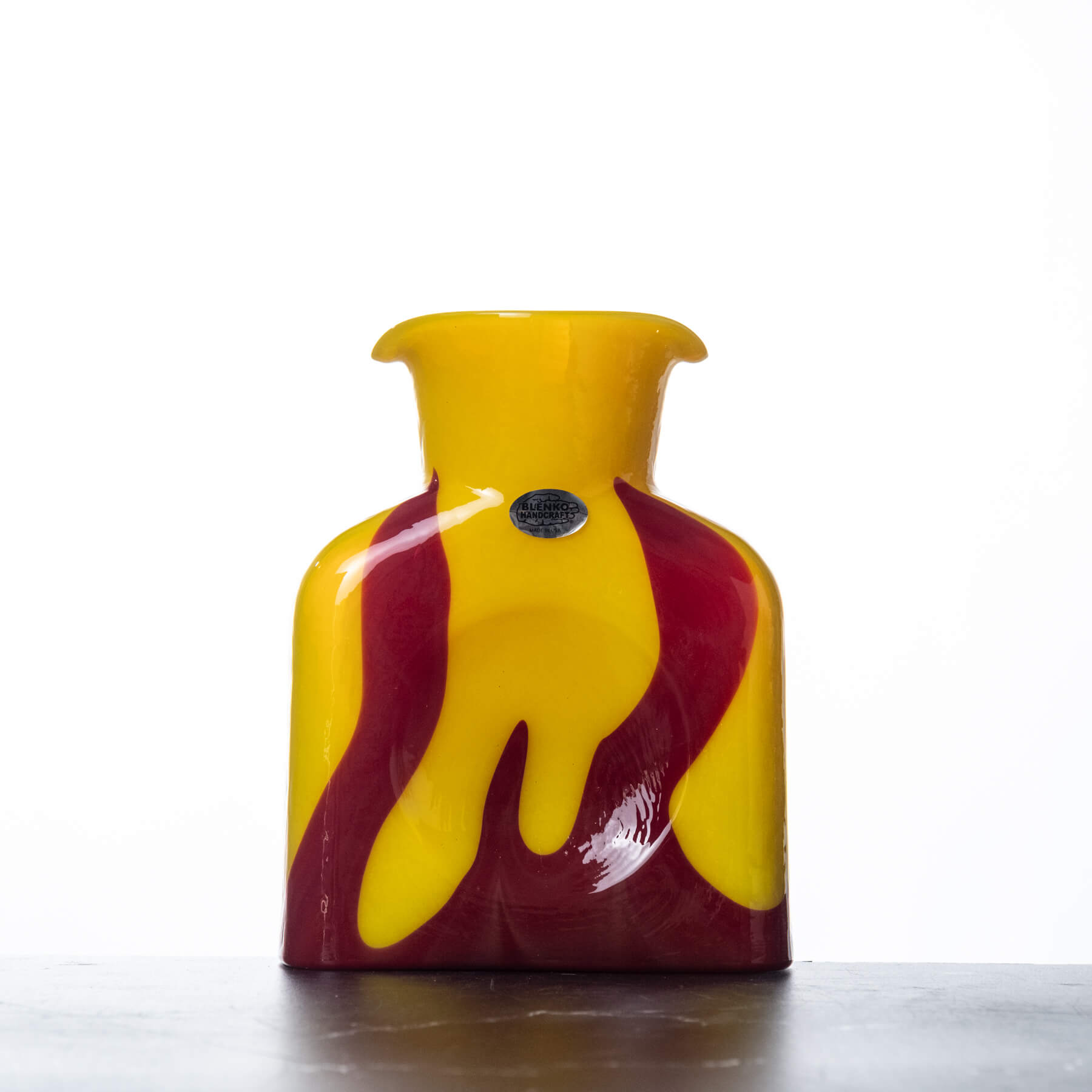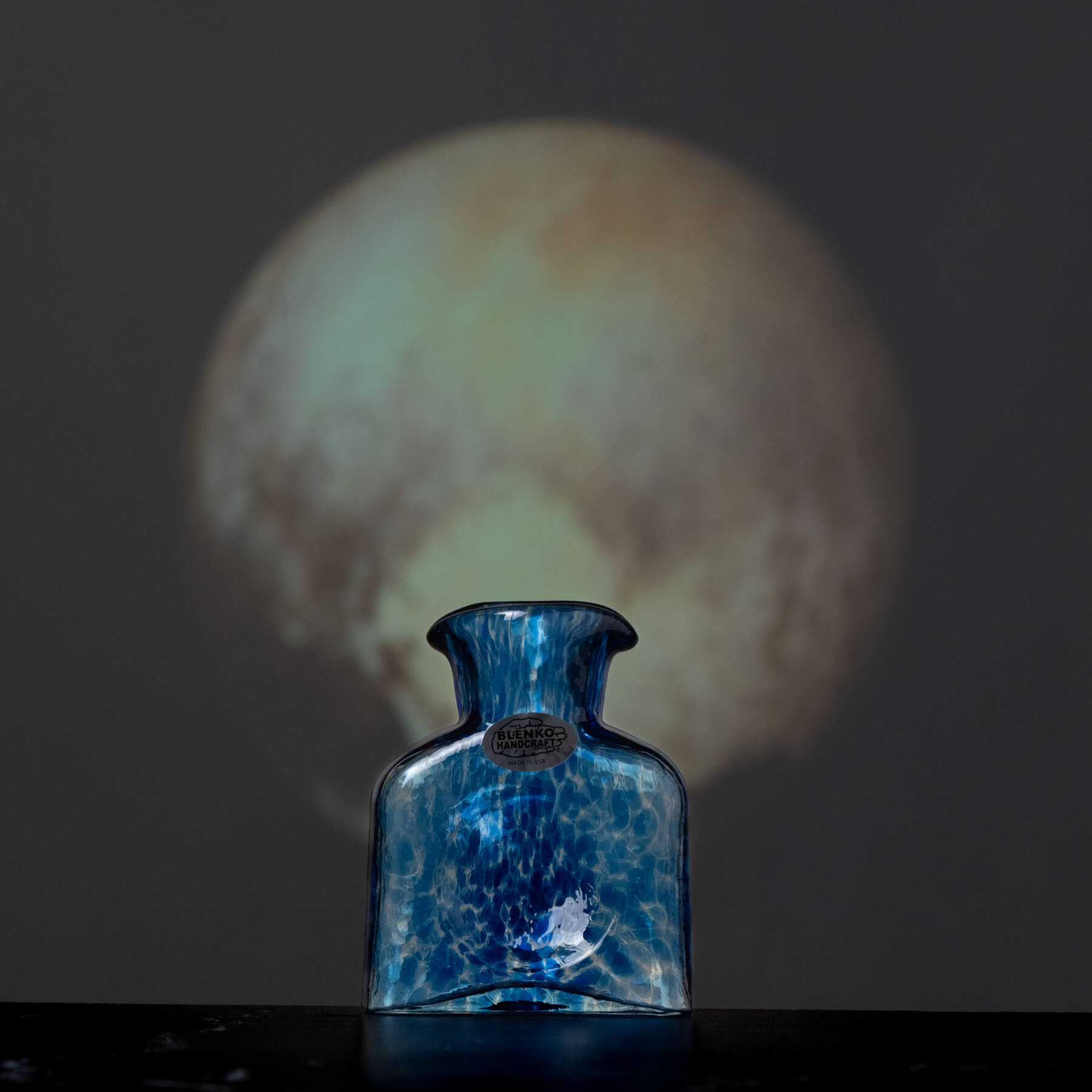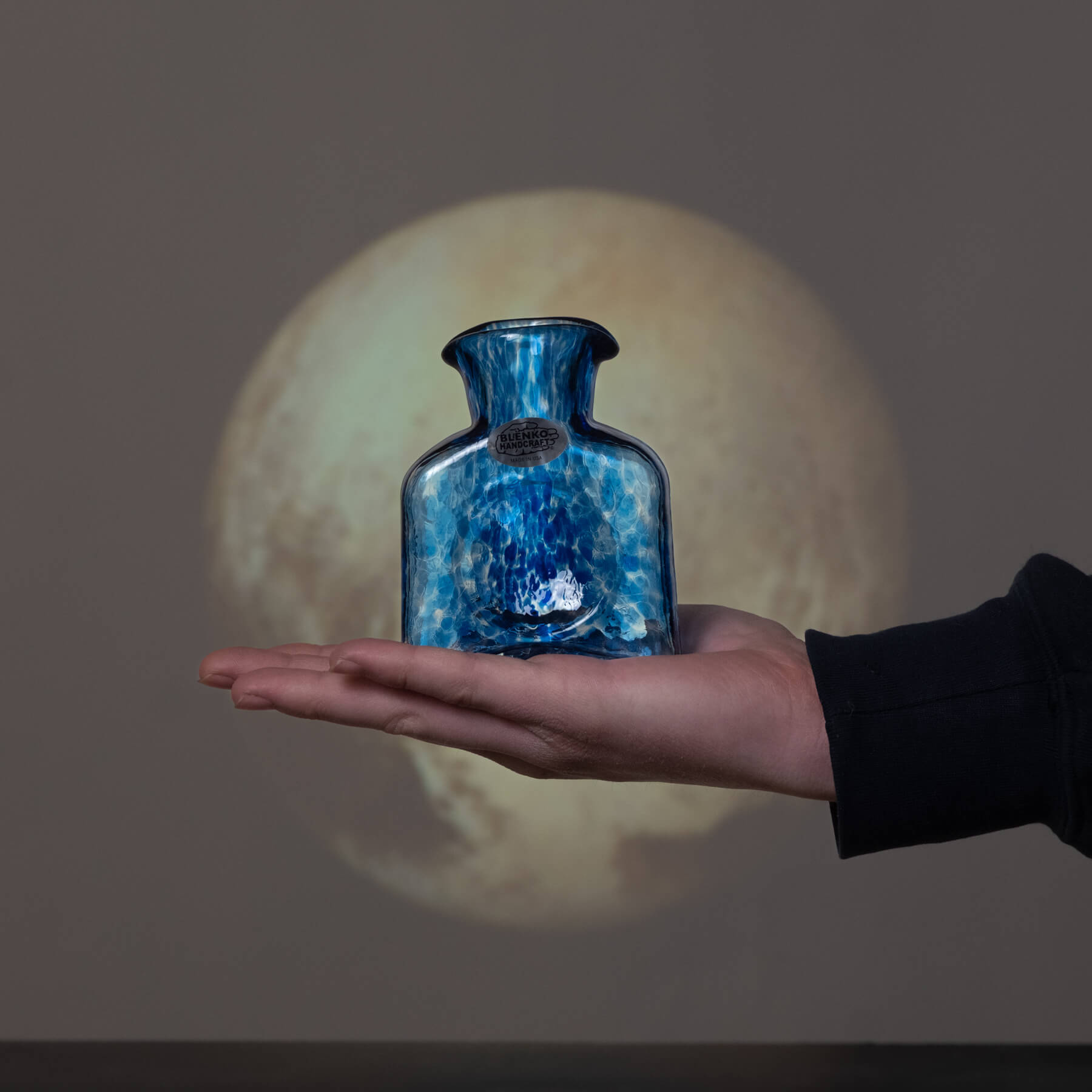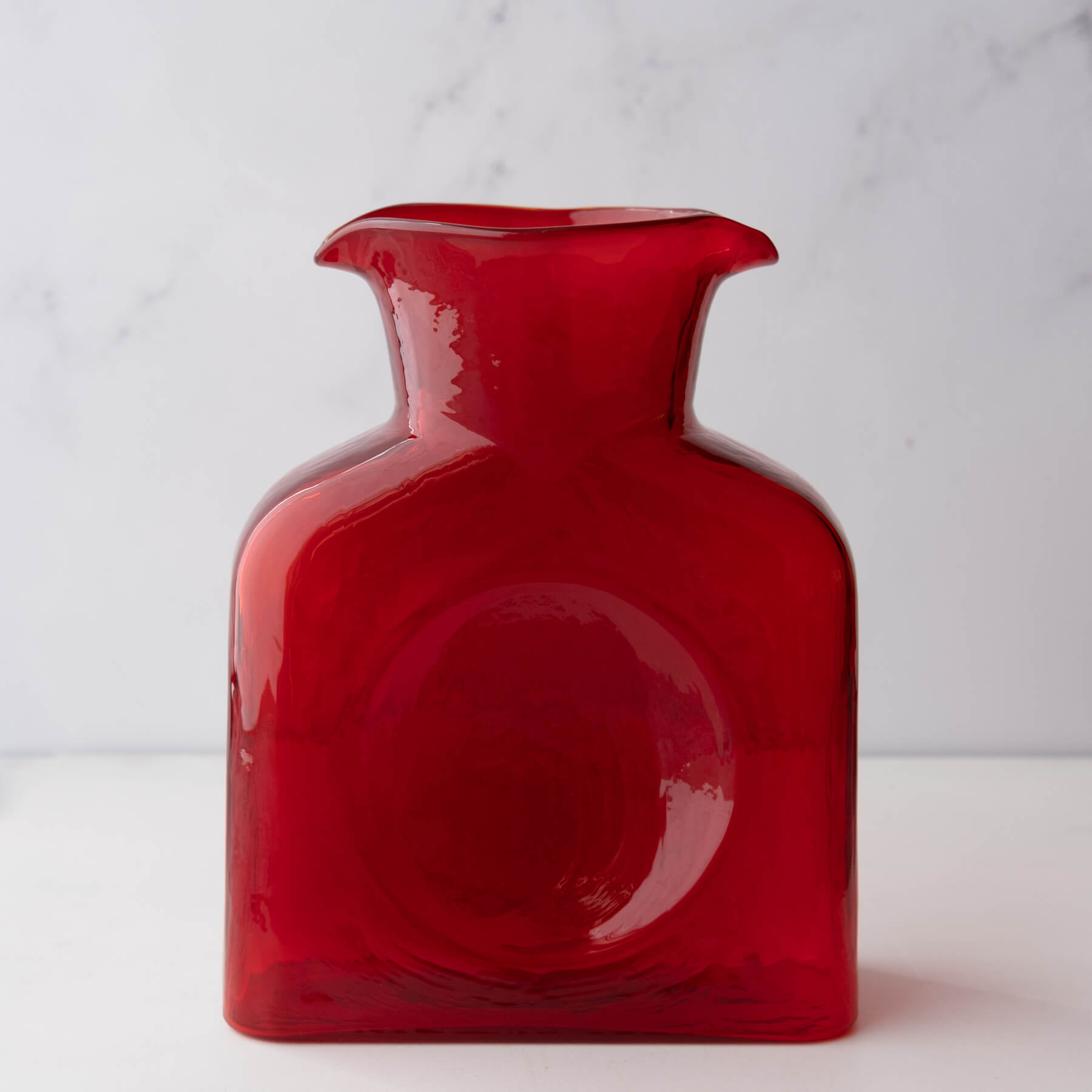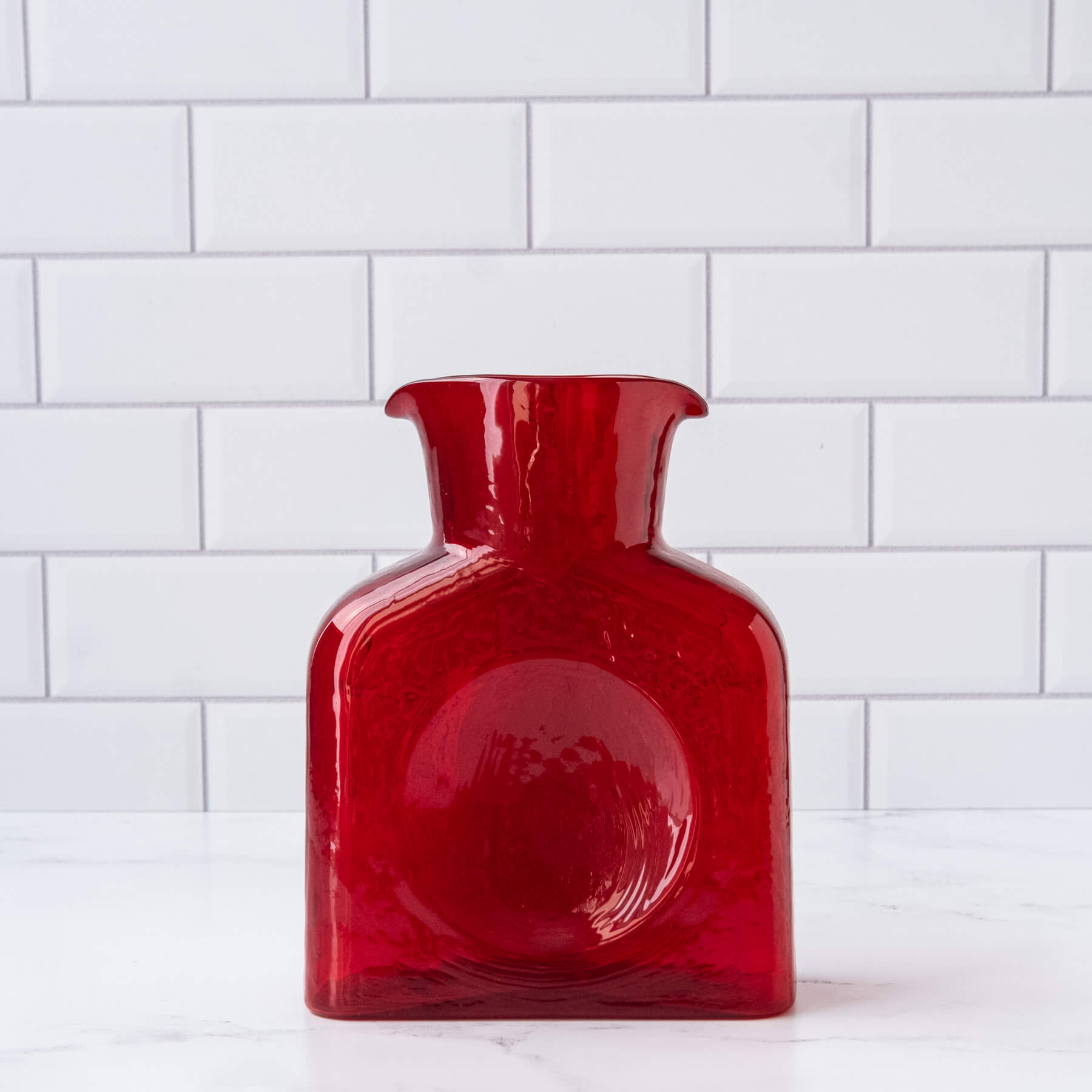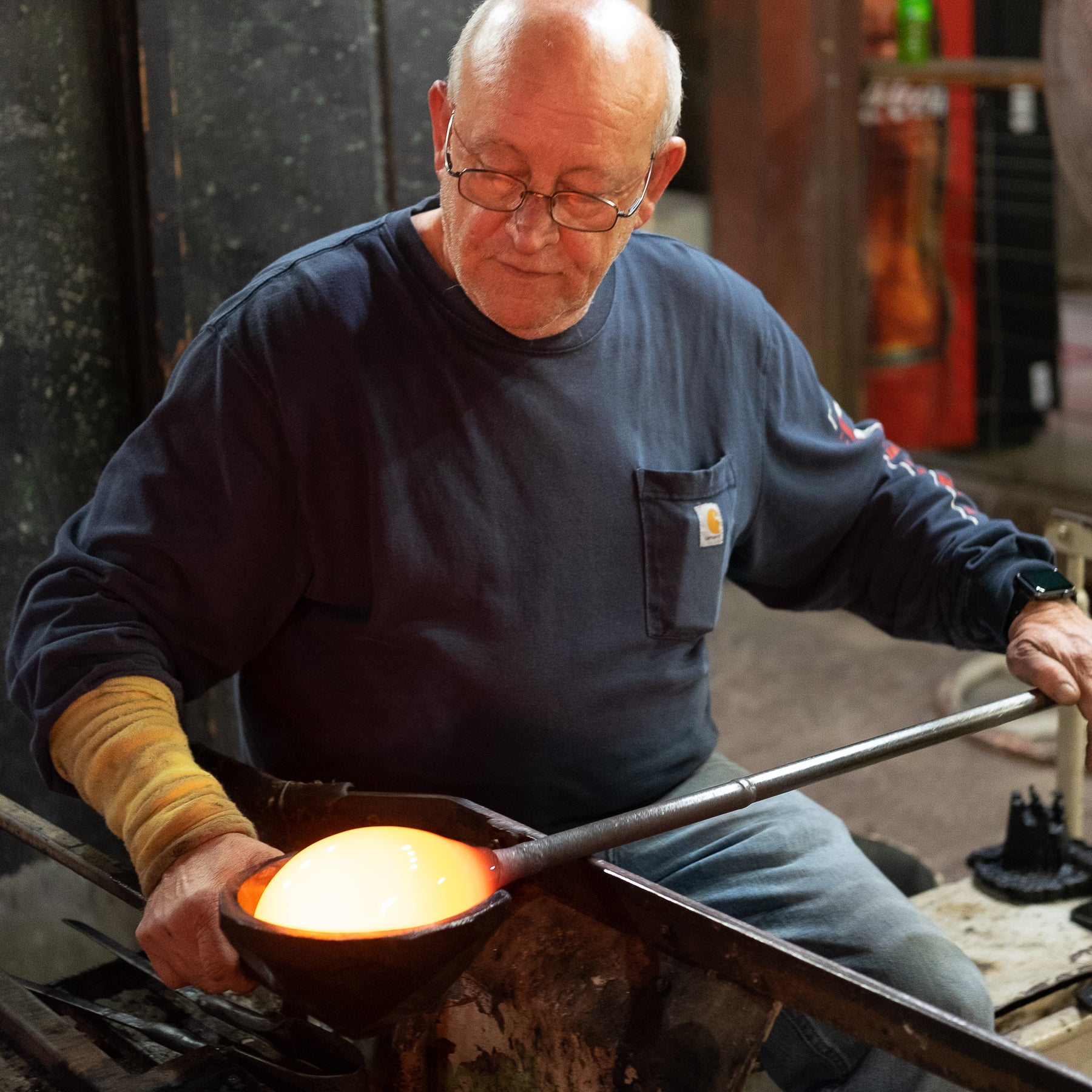
The Craft of Glass Making
Blenko glass is made using the same methods and tools that the master craftsmen in Europe used hundreds of years ago. All workers at Blenko are trained on the job and perpetuate a 1000 year old tradition. The workers in glass factories are divided into groups of six, called "shops". The shop members each have a specific duty to perform and each task varies in its degree of skill. The finisher and Blower are the two key members of the team. The Gatherer is next in line, and the Bit Gatherer, Stick-up Boy and the Carry-In Boy follow in that order. It is essential to the successful completion of a piece of glass that each member of this team perform his task skillfully and faithfully. Just as in any team, full cooperation is necessary.
The operation begins as the gatherer collects a globule of hot glass on the end of a blowpipe. This requires much skill, since a correct amount of glass must be collected, and it must be reasonably symmetrical. Large pieces sometimes require as much as ten pounds of glass. The ball of hot glass is then marveled (rolled on a metal plate). Now the blowpipe is lifted into the air and with a gentle puff the workman traps air in the pipe (called thumbing out) and this air pocket emerges at the end of the pipe into the hot ball of glass. With a wet, scoop-shaped block and paddle of wood the iron tong (pucella) shapes the glass. It is then shaped to fit the mold in which it is to be blown. It takes years of experience to accomplish this task repeatedly - it must be done quickly without a moment's hesitation.
The glass form is then blown and inserted into a water soaked cherry mold where it is constantly rotated. When the piece is sufficiently expanded within this wooden mold, it is withdrawn. The piece is allowed to cool very slightly as it comes from the mold, then the stick-up boy attaches a long pontil rod, tipped with a bit of hot glass, to the center of the piece. The piece is "cracked off” near the end of the blowpipe by chilling the water and carried to the finisher, who reheats it. The ragged, uneven edge is then cut off leaving a clean, straight edge. The form is then completely crafted to the design indicated in the working drawing. The finisher then removes the finished object from the rod with a file like tool and a gentle tap on the rod. The carry-in boy receives it on an implement called a "fork" and proceeds to place it in the lehr to emerge as a completed article about four hours later.


